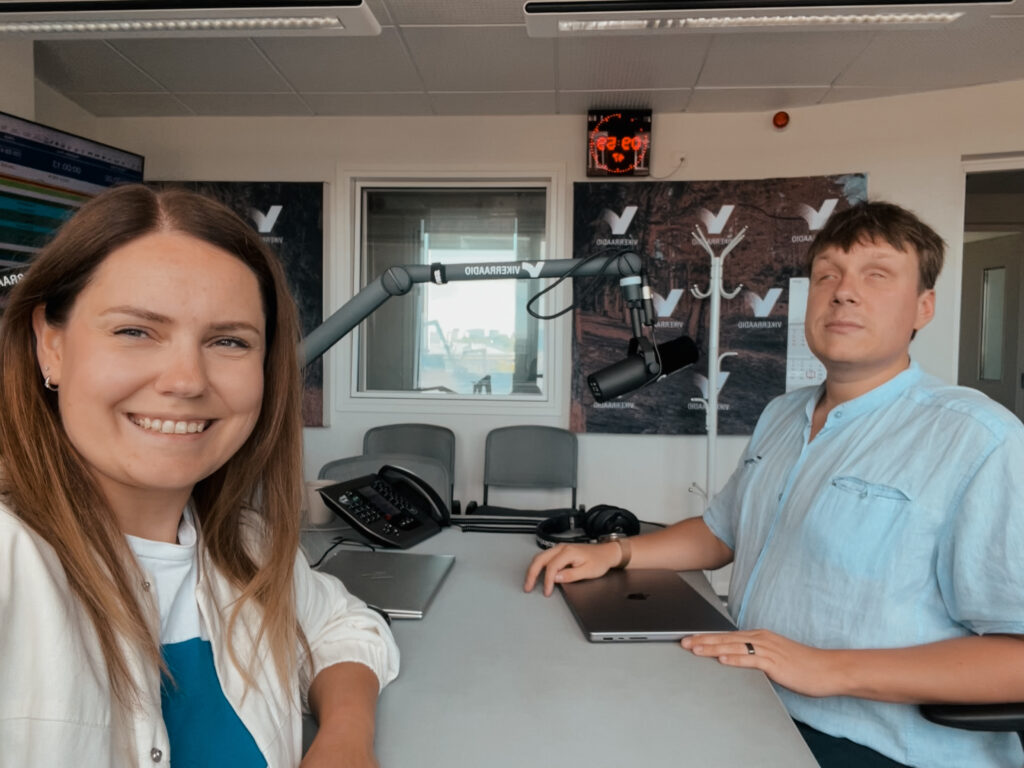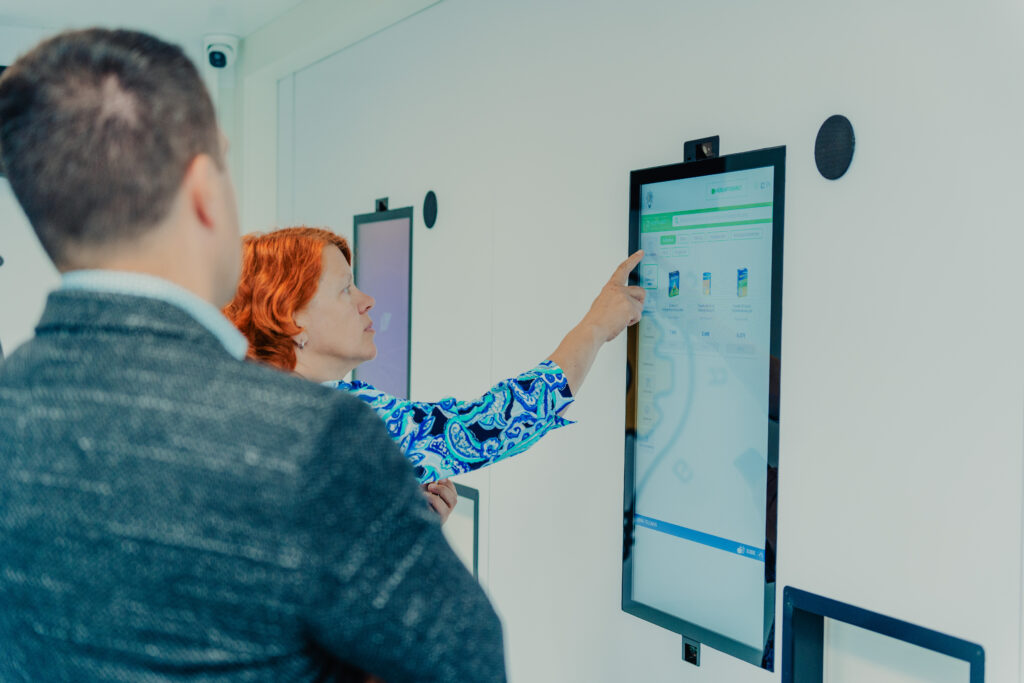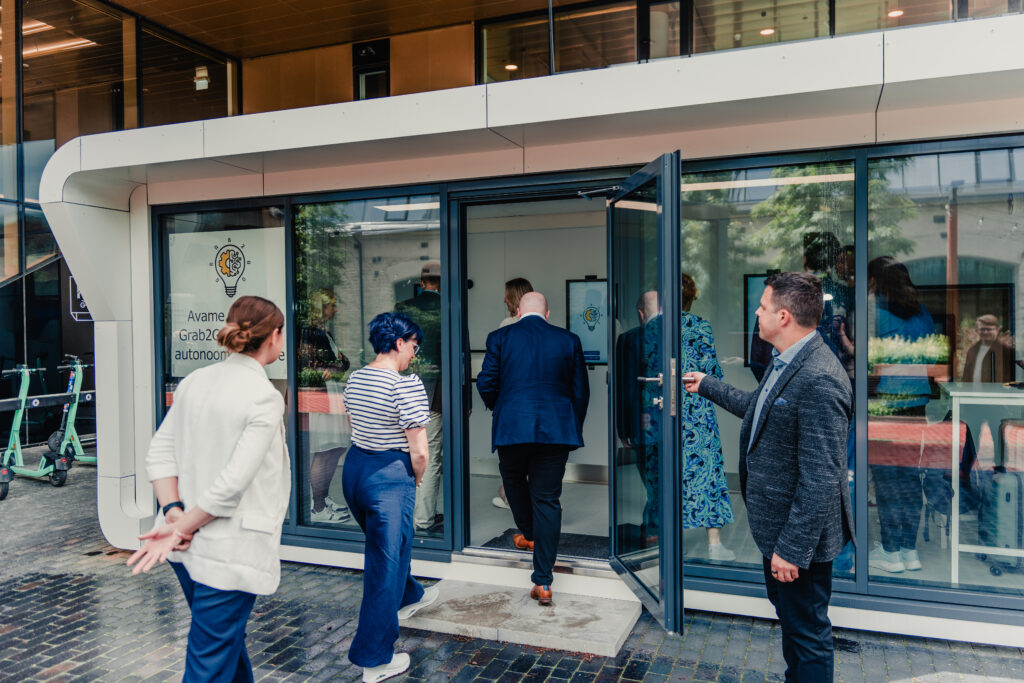Accelerate Estonia’s Head of Public Policy and Innovation, Greta Elva-Jõemaa, recently gave an interview on Vikerraadio about introducing self-service pharmacies to the Estonian market.
Topics such as crisis measures, round-the-clock availability of medicines, the challenges of emergency care, and the bottlenecks of the current legislation were discussed alongside the host Jakob Rosin.
Even though the interview was in Estonian, don’t fret! Here’s a summary in English:

In Estonia, round-the-clock access to medicines is limited to just a handful of pharmacies
On-call pharmacies are a rarity in Estonia. “We have a total of three round-the-clock pharmacies in Estonia – two of them are in Tallinn and one in Tartu – the rest of Estonia remains uncovered,” explained Greta Elva-Jõemaa, sharing the root cause of the problem.
The islands are particularly disadvantaged. While those on the mainland, if necessary, can embark on a long drive to reach an on-call pharmacy in a major city, this option is unavailable to island residents due to limited ferry services. “This means that if someone suddenly suffers from a severe migraine after-hours and doesn’t have medication at home, they are left with no choice but to either call an ambulance or visit the local ER.” Such reliance on emergency services however, exacerbates the strain on an already overburdened medical system.
Primarily a supporting role for the self-service pharmacies
The term “self-service” might initially evoke an image of a grocery store or traditional pharmacy, where customers browse the shelves and select the products they want. However, a self-service pharmacy operates differently – the entire purchasing process takes place on a screen.
Elva-Jõemaa explained that in a self-service pharmacy, customers can select medicines, including their prescribed medications, on a screen and add them to a virtual shopping cart. “Before completing the purchase, it is mandatory to consult with a pharmacist who will provide advice,” emphasized Elva-Jõemaa. According to the Estonian Medicines Act, customers must always consult a pharmacist when receiving medication. This ensures that the correct medication is dispensed and proper usage instructions are provided
If everything is in order, the pharmacist remotely confirms the purchase, the customer pays for the products, and the machine behind the screen dispenses the medication.
Greta Elva-Jõemaa believes that self-service pharmacies do not necessarily need to compete with traditional pharmacies. Instead, this solution could be particularly successful in a supportive role, especially as an on-call pharmacy.

Workforce, emergency services, and crisis response – better management of resources across multiple areas
The proposed technology clearly helps better manage resources. A single pharmacist can advise patients via video, regardless of their location. Could this mean that pharmacists might also be able to work from home in the future? “This will be up to the individual pharmacy chain operators,” said Elva-Jõemaa, noting that the more significant advantage of this solution is the improved management of pharmacists’ resources.
There are further gaps that a self-service pharmacy could address. “We have the opportunity to alleviate the workload of ambulances and emergency departments, especially in rural areas where pharmacies close early,” observed Elva-Jõemaa. She emphasized that the solution could help emergency service providers better focus on their assigned tasks, rather than distribute medicines. Enhancing the regional round-the-clock availability of medications will also be an added benefit.
The forward-thinking solution also plans to utilize a self-service pharmacy in crises. Specifically, the technology provider participating in the Accelerate Estonia program has designed its solution as a modular unit, making the pharmacy easily deployable in crisis situations and ensuring medications can be swiftly delivered to areas with the greatest need.

Regulatory hurdles remain the biggest barrier
“We have limited examples of such solutions in Europe,” noted Elva-Jõemaa on the program, highlighting that while similar solutions exist in the USA and Canada, they remain rare elsewhere. “In Estonia, regulations are currently more conservative.” The existing Medicines Act specifies the conditions under which pharmacy services must be provided in Estonia, however, the concept of a self-service pharmacy is not yet incorporated into the law. Currently, self-service pharmacies can only operate within a regular pharmacy during its opening hours, under a special permit from the Medicines Agency.

How will self-service pharmacies eventually reach the market?
“If the term is not incorporated into the Medicines Act, it is prohibited. We are therefore trying to introduce the concept of self-service pharmacy into various sections of the Medicines Act, so it would allow for self-service on-call pharmacies across Estonia.”
“For this purpose, we have held discussions with professional associations, the Ministry of Social Affairs and the Medicines Board. At the moment, we are also doing an impact analysis, where, in addition to the economic aspects, the impact on public health and the rest of the sector will also be assessed,” shared Elva-Jõemaa on the progress of the project.
At the end of the day, a change in the legal framework is necessary to push for change. “After the impact analysis, we will start preparing the process of developing the draft law.” Through these steps, the concept of self-service pharmacies could soon be integrated into the Medicines Act.
If you want to learn more about the project carried out in cooperation with Grab2Go, read more HERE.



